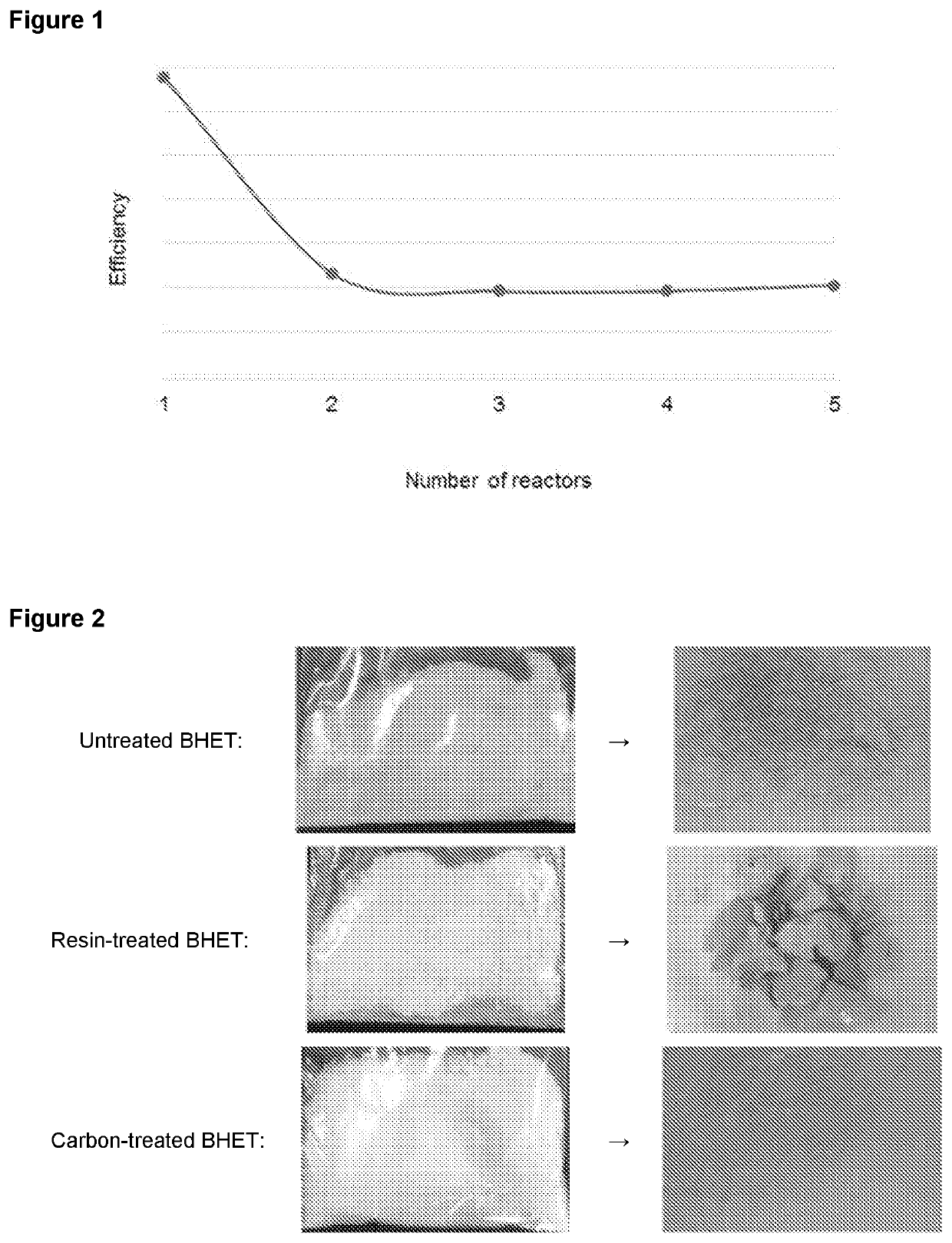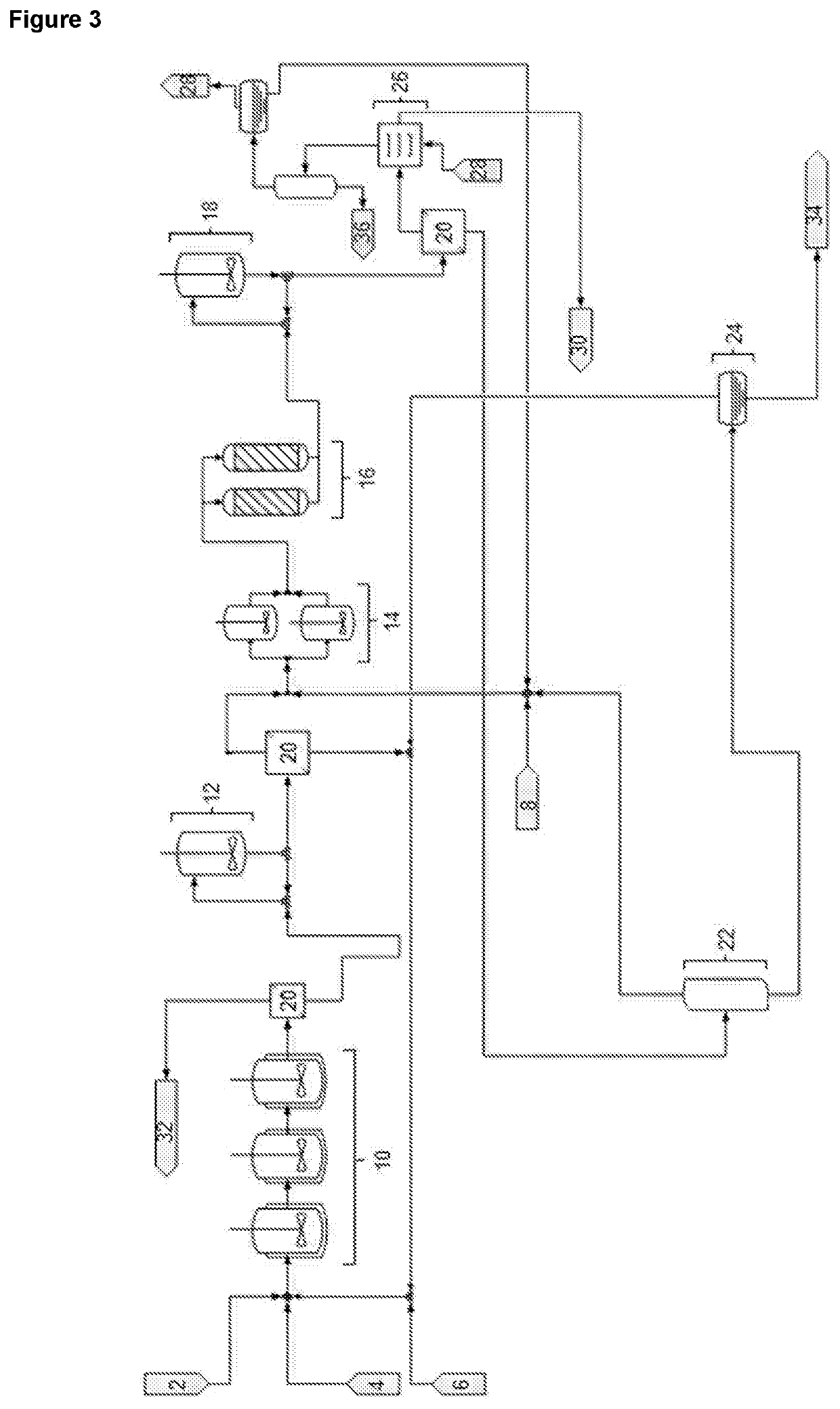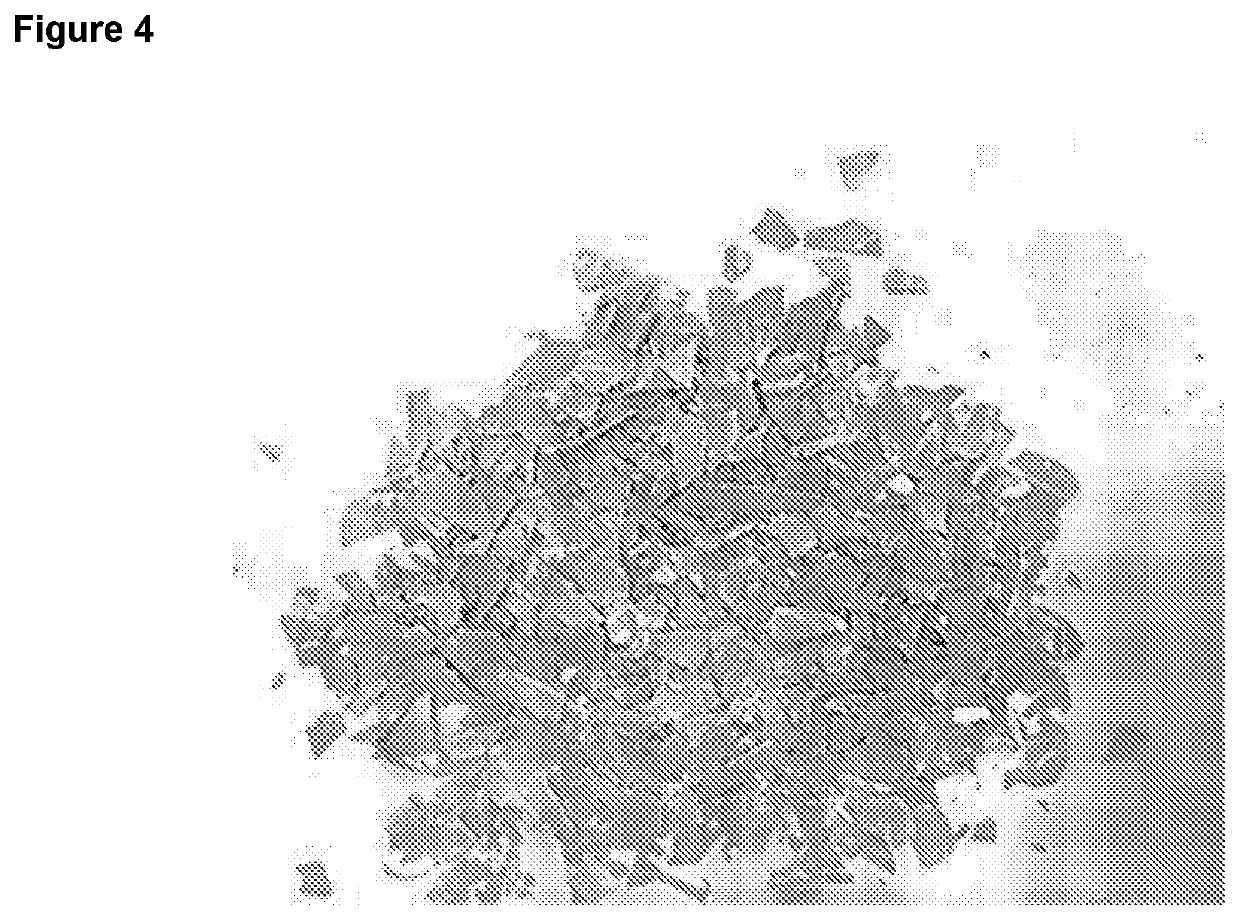Polymer recycling
- Summary
- Abstract
- Description
- Claims
- Application Information
AI Technical Summary
Benefits of technology
Problems solved by technology
Method used
Image
Examples
example 1
isation Step (a)
[0140]Depolymerisation reactions in different series of reactors were simulated. The ratio of PET:ethylene glycol:catalyst system used in the simulation, by mass, was 1:4:0.005. Each reactor was simulated as operating at a temperature of 197° C., and at atmospheric pressure. The simulations were set so as to provide a conversion of 99.0% at the outlet of the final reactor in the series.
[0141]The results of the simulation are shown in the following table:
Number ofResidence timeTotal ResidenceConversion indepolymerisationper reactortimethe outletreactors(hours)(hours)(% starting PET)15454(R1) 99.0%2510(R1) 90.2%5(R2) 99.0%326(R1) 78.6%2(R2) 95.4%2(R3) 99.0%41.184.7(R1) 68.5%1.18(R2) 90.0%1.18(R3) 96.9%1.18(R4) 99.0%50.834.2(R1) 60.4%0.83(R2) 84.4%0.83(R3) 93.8%0.83(R4) 97.6%0.83(R5) 99.0%
[0142]In order to obtain a production level of around 10,000 tonnes per year, the volume of a single reactor would be about 300 m3. Where a series of three reactors is used, the volume...
example 2
Solvent for Use in Step (c)
[0145]BHET recrystallisation experiments were conducted in a variety of solvents, including methanol, ethanol, isopropanol, butanols and alcohols with a longer carbon chain.
[0146]Specifically, 50 g of crude BHET was dissolved in 250 ml of solvent at 80° C. for 1 hour. The BHET was recrystallized by cooling at a rate of 7° C. / hour until a temperature of 10° C. was reached. The recrystallised BHET was analysed to determine its colour density. The weight loss during the recrystallisation processes was also measured.
[0147]The results are shown in the following table:
Weight lossColour densitySolvent(%)(b[h])Methanol284.06Ethanol574.05Isopropanol603.87Tert-butanol—3.91N-butanol564.03N-heptanol224.80Octanol264.88Isooctanol276.07N-nonanol156.65
[0148]It can be seen that each of the lighter solvents gave good levels of decolouration. However, the amount of material lost during the recrystallisation was significantly lower in methanol than in any other of the lighter...
example 3
sing Step (d)
[0149]A number of different techniques were used for decolourising an aqueous solution of BHET.
[0150]Experiments using resins gave promising results:
Type of resinAppearance of solutionWeak-acid cation exchangeHigh decolourationMacroporous AModerate decolourationMacroporous BGood decolourationMacroporous CGood-moderate decolourationStrong-acid cation exchangeVery high decolourationStrong-base anion exchangeModerate decolourationWeak-base anion exchange AGood-moderate decolourationWeak-base anion exchange BGood decolouration
[0151]It can be seen that cation exchange resins, and particularly strongly acidic cation exchange resins, gave the most promising results.
[0152]Activated carbon was also highly effective at decolourising BHET:
BHET sampleColour density (b[h])Untreated7.21Cation exchange resin4.58Activated charcoal1.08
[0153]Pictures of the untreated and treated samples, and pictures of PET prepared using the samples, are shown in FIG. 2. While the cation exchange resin ...
PUM
| Property | Measurement | Unit |
|---|---|---|
| Temperature | aaaaa | aaaaa |
| Temperature | aaaaa | aaaaa |
| Temperature | aaaaa | aaaaa |
Abstract
Description
Claims
Application Information
 Login to View More
Login to View More - R&D
- Intellectual Property
- Life Sciences
- Materials
- Tech Scout
- Unparalleled Data Quality
- Higher Quality Content
- 60% Fewer Hallucinations
Browse by: Latest US Patents, China's latest patents, Technical Efficacy Thesaurus, Application Domain, Technology Topic, Popular Technical Reports.
© 2025 PatSnap. All rights reserved.Legal|Privacy policy|Modern Slavery Act Transparency Statement|Sitemap|About US| Contact US: help@patsnap.com



